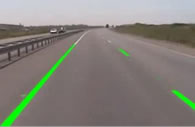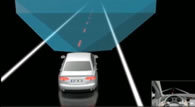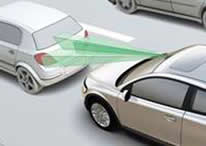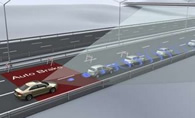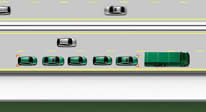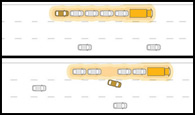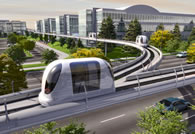
Although the task of developing vehicle systems capable of driving
themselves in current highway and urban contexts is exceedingly
complex, scientists and engineers are pushing the envelope to bring
the idea of truly smart cars into mainstream reality. For a vehicle to be
able to drive by itself, it needs its own senses, brain, control and
guidance to perceive and react to its environment. As computational
power continues to increase and sensor systems become cheaper to
manufacture, we will likely see fully autonomous vehicles become a
reality in the coming decades. In the next five to ten years consumers
will see a continued rise in the use of GPS, advanced RADAR systems,
wifi connectivity, and a seamless integration between hardware and
software coming standard onboard all new vehicles. In roughly twenty
years, if current trajectories hold true, "drivers" will be enjoying a fully
autonomous RIDE experience. (turkishspirit.com)
The current developments and future directions in this field are varied, but they seem to fall
under the following categories: lane detection/assist, collision
avoidance/adaptive cruise control, "follow the leader" technologies, and
urban or local PRT (personal rapid transit) style infrastructure systems.
Lane Detection/Assist
Research continues to improve existing lane detecting technology,
addressing complexities such as lane curvature, worn lane markings,
lane
changes, and emerging, ending, merging, and splitting lanes. Other
research is being done to enhance software for vehicle-to-vehicle
measurement while lane positioning (path.berkeley.edu).
The Audi S8 and A4 models come with optional Lane departure
systems. Audi has a system that signals the driver if they begin to drift
from their lane. The intensity of the assist can be adjusted. It
physically will nudge the wheel back to the lane.
The Side Assist/Blind Spot Assist feature by Audi signals the driver if
there is a car in the blind spot when the turn signal goes on. Video
Mercedes Benz E-Class side and lane assist via vibration works similar
to the Audi models only the E-Class system provides a steering wheel
vibration that increases in intensity as the car leaves a lane. Video
Collision Avoidance
Research is being done to develop systems focused on the driver.
Driver attention and behavior will be determined and the car will react
accordingly via analysis of driver foot positioning, hand position on
wheel, head and gaze movement, etc (cvrr.ucsd.edu).
Using internal sensors Mercedes E-Class delivers a driver attention
assist via beeping message. Video
The new Volvo XC60 comes with a mulit-faceted collision avoidance
system
--Adaptive cruise control adjusts the car's velocity based on safe
distance from cars ahead.
--Collision warning with auto braking determines the safe stopping
speed based on the distance to cars ahead and engages the braking
system if that safe distance and speed are violated. Video (wired.com)
"Follow the Leader" Technology
The SATRE project or Safe Road Trains for the Environment, supported
by Volvo is an EU-backed initiative set on developing and testing
technology for autonomous vehicles. The key to this theory is an idea
of having “road trains” as they are called. They are basically groups of
six to eight vehicles traveling on one route. Each train has a lead
vehicle with a person at the helm who knows the route very well, for
instance a bus or taxi driver. When drivers of the other vehicles need
to get off at certain exit or take a turn, they simply retake control of
their car and connect to another road train on the requisite route.
They are many advantages according to SATRE managers. It will
improve fuel economy and lower the overall CO2 output of vehicles
around the world thanks to the efficient drafting of vehicles only inches
from each other. It is also liable to improve traffic flow and cut down
commuting time. Business can also be undertaken while on the move,
because no human participation is required to drive. Technological
improvement will deal primarily with the vehicles themselves and not
the existing roadway infrastructure, SATRE says. Navigation and
transmitter systems control the acceleration, braking, and steering of
the vehicles. Video (wemotor.com)
PRT Systems
The “podcar” or PRT system is in development across the globe. These
“podcars” are light freights that carry up to four people. They run on a
monorail above roads and are completely run by electricity. The
purpose of these “podcars” is not only for an express service to your
destination but also to be cost-effective. Oil and gas will no longer be
a necessity to run your vehicle. Podcars offer a new kind of service,
providing the convenience of an auto without the negatives for the
individual. This includes the costly purchases for gasoline, insurance,
maintenance and parking. For society, podcars would reduce the use of
petroleum as well as pollution, congestion, accidents, injuries and
deaths. Video (latimes.com)
Heathrow airport will launch in the Spring of 2010 a PRT system called
the ULTra. Video
Microsoft uses a PRT solution for their corporate campus. Video
Home | History | RIDE System | Bibliography
